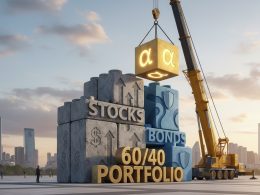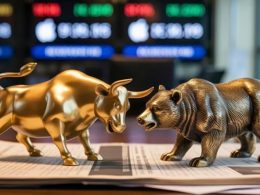by Eric Knutzen, CIO, Multi-Asset Class, Neuberger Berman
Managing volatility and maximizing opportunities in the late cycle.
There was a time when late summer was a calm period for markets. August meant time away from the office and a slower news cycle. Today, things are different. This month alone has seen a deluge of market-moving stories on everything from the inversion of the yield curve to renewed trade tensions to amplified geopolitical risks in Hong Kong, Britain and Italy. What’s left of the traditional August lull often translates into lower trading volume and reduced liquidity. Together, this can manifest in heightened volatility: August saw the VIX volatility index reach its highest level since January, while the S&P 500 registered its longest streak of big daily moves over the same period.
[backc url='https://sendy.advisoranalyst.com/w/XPGz0lid3xGXehquLAqBXQ/gMgxY5TsLVv49HHhVDis5g/dkf892mXQl7t7dU0n69r7dBw']Many clients are rightfully concerned by this volatility, frequently asking the late cycle’s million-dollar question: are we on the brink of a recession or not? We hosted a client webinar last week addressing this and related issues. As Brad Tank articulated in last week’s CIO blog, we do not believe the inverted yield curve necessarily signals a near-term recession. Our base-case remains that we are in an extending late-cycle environment.
Late-Cycle Challenges
But August’s late-summer squalls highlight the unique complexities of late-cycle investing. In our recent white paper, “Survive and Thrive: Robustness, Flexibility and Opportunism in Late-Cycle Investing,” we identified some of these challenges. First, sentiment can trump fundamentals as investors start eyeing the exits, hoping to beat the rush when the end cycle arrives. But with cycle dynamics uncertain, attempts to time the downturn often result in volatility as these sentiments rapidly change.
Second, the late cycle often sees bouts of strong correlation between equity and bond performance, making it difficult to hedge equity exposure.
Third, rising corporate leverage can provide a short-term boost to earnings, resulting in a final surge before the end cycle arrives. Overly cautious investors could miss late-stage opportunities. A fundamental challenge of late-cycle investing is to maintain exposure to this upside without losing control of overall portfolio risk.
Moreover, there are reasons to believe this late cycle may be uniquely challenging. As we emphasize in the white paper and in a recent podcast, pervasive negative yields on government bonds give investors few places to go to reduce equity exposure.
Surviving and Thriving
So, how can investors survive and thrive in this challenging environment? At Neuberger Berman, we think the late cycle is an opportune time to explore a few asset allocation principles: distinguishing signals from noise, pursuing true diversification, investing through the cycle and preserving liquidity.
A crucial first step is to distinguish signals from noise. It’s easy to see rising volatility and an inverted yield curve and conclude the end times are nigh. But caution is warranted. Volatility may not reflect fundamentals, and the increasing interconnection between the markets for U.S. Treasuries and other government debt, like German Bunds, may mean the yield curve is less predictive than in the past. U.S. fundamentals still look positive to us, even if the headlines paint a more pessimistic picture.
Diversification is essential—not just cosmetic diversification, but genuine diversity across asset classes, investment styles and geographies. Especially if equity and credit performance converge, investors will need to look elsewhere to hedge their equity risk. Inflation-linked bonds, private markets strategies, liquid alternatives and other less-correlated assets are all possibilities to meet this need.
Late-cycle success also requires identifying through-cycle themes. Not all companies and assets depend so heavily on the business cycle. Thematic investments—such as those to mitigate climate change, enhance 5G connectivity or leverage Big Data—promise idiosyncratic risk and the potential for growth driven by factors beyond the cycle.
Finally, investors should prepare to be opportunistic by providing liquidity where needed. Late-summer illiquidity may be especially notable, but it is by no means unique. Market liquidity more broadly has diminished as liquidity provision has migrated from broker-dealers to high-frequency traders with more rigid trading parameters. Staying liquid is important for two reasons: first, lower overall liquidity means investors cannot rely on easy exits from their existing positions should conditions deteriorate; second, late-cycle dynamics can provide excellent long-term value opportunities to investors positioned to capitalize on others’ pressured exits.
Charting a Course
August may be coming to a close, but volatility does not appear to be going anywhere. As the late cycle continues, markets will likely remain sensitive to the daily news flow, with many letting headlines drive short-term decisions. Friday’s news—additional Chinese tariffs on $75 billion of U.S. goods and a presidential edict, arriving via tweet, for U.S. companies to avoid doing business with China—will justifiably rattle markets. But while geopolitical turmoil cannot be ignored, neither should it displace a focus on fundamentals.
We think there is value to be captured in charting a course and following it rather than being buffeted by these squalls. We remain positive on the outlook for U.S. growth and think fundamentals will hold into next year. While slowing trade flows, Brexit and rising populism make us less optimistic on Europe, we expect central banks to pursue expansionary monetary policy and attempt to underwrite continued growth.
We believe late-cycle investing calls for a focus on the basics of investing. Even as it presents unique challenges, the late cycle can come with opportunities for those with clear convictions and the nimbleness to act on them.












